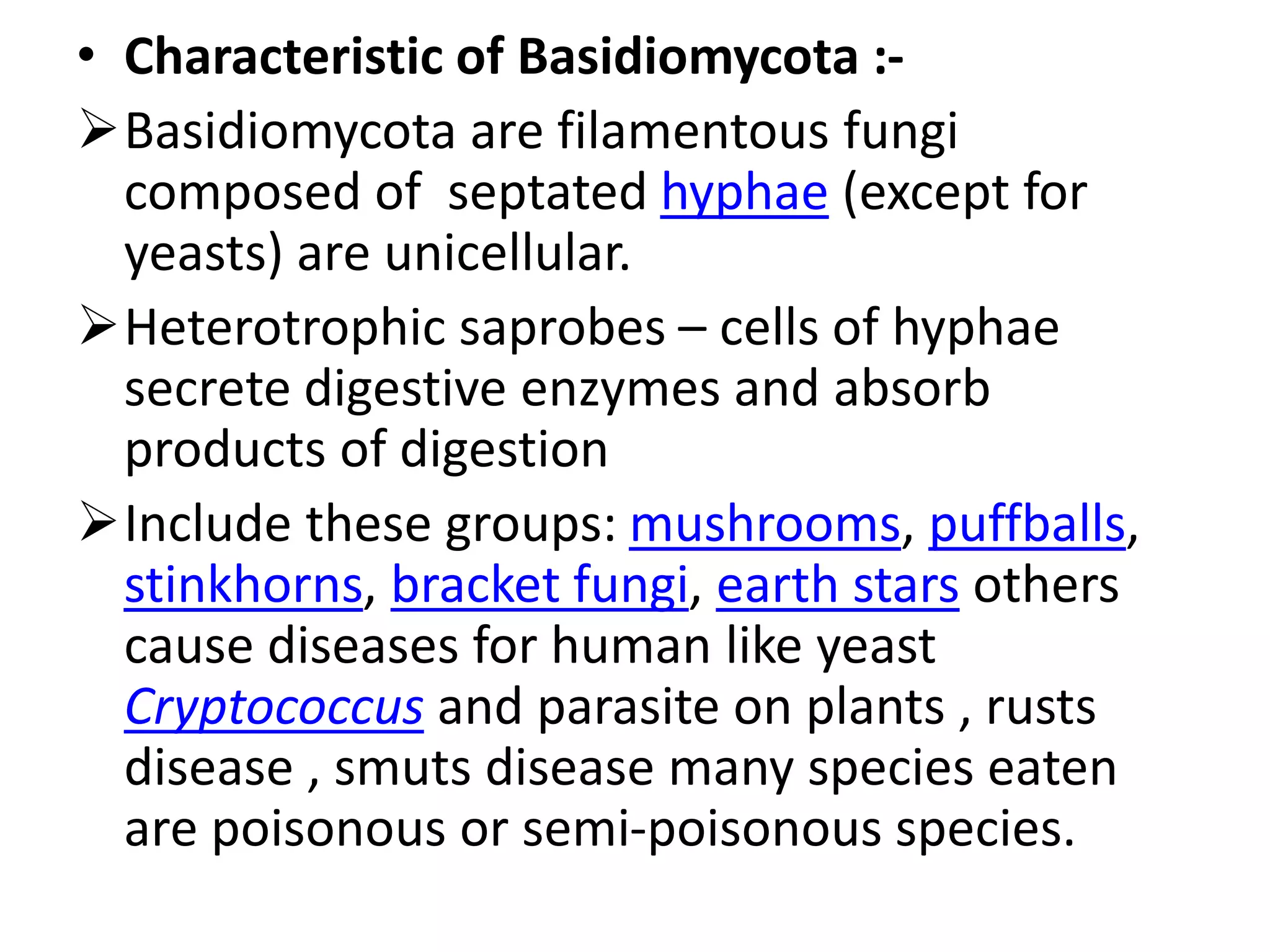Basidiomycota is a phylum of fungi, known as 'club fungi', that produces basidiospores on club-shaped cells called basidia, with members including mushrooms, puffballs, and bracket fungi. They can be either homothallic or heterothallic concerning mating systems, affecting their reproductive strategies and genetic variation. The life cycle involves complex stages including dikaryotic mycelium formation and the development of basidiocarps, with various classes demonstrating unique characteristics such as jelly fungi and puffballs.



















































































